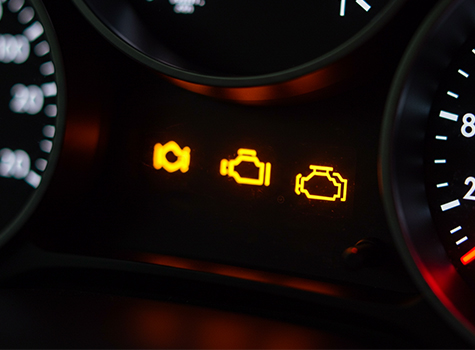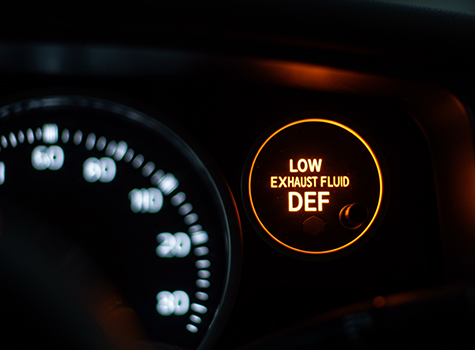BMW 320d Service Light: What It Means & How to Act
What Your BMW 320d Service Light Is Trying to Warn You About
BMW 320d is a very popular car that comes with a very latest intelligent feature, Condition based Servicing system. When your BMW’s dashboard light turns on, it’s not just trying to tell you for an oil change, it’s the way your 320d warns you and is trying to tell you something that you need attention under your car bonnet. If you ignore these dashboard lights, it can turn your simple, minor engine repairs into a big engine part replacement, your car’s turbo or DPF failure, or your BMW engine can be completely seized. Many owners go to the internet and search the web for the BMW 320d engines for sale or even plan to do a full BMW engine replacement because now, not minor engine repairs are possible to get your car back on the road. In other words, your BMW dashboard lights’ glowing reminder could be the difference between your routine engine maintenance and complete engine replacement for four-figure prices.
In this article, we will learn what the BMW dashboard lights colour means, icons and mileage are trying to tell you on the BMW 320d, why they pop up or blink on your dashboard earlier than the other 320d owners and when you should pay attention, and how to reset this light. This guide is mainly focused on the E90, D30 and the latest G20 generations, but this expert guide will apply generally to all the new BMW models and series across the range. Just give yourself for few minutes and you might save yourself five grand.
Why the Service Light Matters

A recent study by the RAC found that nearly a third of UK drivers continue to drive with a warning light on, risking further damage and invalidating warranty claims. In the 320d, the service indicator does more than estimate time since your last oil swap; it looks at sensor data on oil quality, brake wear, particulate filter load, and even driving style to predict when key components will drop below safe margins. Acting promptly keeps those components within their designed tolerances, which in turn protects the aluminium block, turbocharger and emissions equipment that make the 2.0-litre diesel both powerful and efficient.
Understanding BMW’s Condition Based Servicing (CBS) System
CBS replaced the old fixed-interval regime because not all journeys are equal. Idling in city traffic, towing a trailer or making short winter trips will degrade oil and filters faster than a weekly motorway blast. Sensors in the oil pan, brake pad carriers and exhaust monitor wear in real time. When any parameter crosses a threshold, the mileage countdown in the iDrive screen shortens, and the service light turns from green to amber. Ignore it for another 1,000 miles, and it may turn red, indicating that the car is now outside its safe window for that service item.
Common Warnings Behind the 320d Service Light

- Engine Oil Service – The most frequent reminder. Low-sulphur 5W-30 oil in Euro-6 320d models can shear quickly if you drive lots of short trips. Fresh oil keeps the variable-geometry turbo’s bearings healthy.
- Brake Pads – A pair of wear sensors let the ECU know when the pads are down to the last 3 mm. Waiting until the rotors score will double the bill.
- Diesel Particulate Filter (DPF) Load – Excess soot means the car has failed to regenerate. A forced regeneration or filter clean is cheaper than a new DPF.
- DEF / AdBlue Level – If the tank runs dry, the engine will refuse to restart. Top-up bottles are cheap; recovery is not.
Each of these messages uses the same service lamp, so checking the iDrive menu or the small LCD in the instrument cluster is essential to know which item has triggered the alert.
How Driving Style Affects the Timing of the Light
Two owners can cover identical mileage and see their service light come on months apart. That is because CBS calculates service life using fuel consumption, average engine load and even outside temperature. Short urban journeys prevent the oil from reaching full temperature, so moisture and diesel dilution build up. On top of that, frequent stop-start events mean the starter motor and battery work harder. Conversely, long motorway trips at steady revs allow the DPF to regenerate and the engine oil to burn off contaminants, extending the countdown. So, if your friend’s 320d reaches 18,000 miles between oil changes while yours demands service at 12,000, do not panic – your usage pattern is simply tougher on the fluids.
Can You Keep Driving When the Light Stays On?
The colour tells you. Green means all is well; amber warns you to book in soon; red is essentially a ‘stop now’ instruction. Driving a short distance on amber is normally safe, but continuing on red could trigger limp-home mode or cause irreparable damage. The ECU logs overstays in its memory, and if you are unlucky, this can give insurers or warranty providers a reason to reject a claim later. In practical terms, that little lamp could be worth thousands of pounds in protection.
Resetting the Service Light After Maintenance
Once the required work is complete, you or your technician must reset the service counter. On most E90 and F30-generation 320d models, you do this by switching the ignition on (engine off), holding the trip-reset button until a hidden menu appears, then scrolling to the relevant item and pressing to confirm ‘Reset’. For later cars with a digital cockpit, the process moves into the iDrive menu under ‘Vehicle Status’. If the light is reset without actually carrying out the work, the CBS system will assume everything is fine and stop reminding you – a false economy that often ends in failure.
Ignoring the Light: Real-World Costs in the UK
Let us put numbers to it. A dealer oil service on a 320d costs around £250. Rebuilding a seized turbo due to oil starvation starts at £1,200. A new DPF can cost £1,600, and a top-quality remanufactured long block is often north of £4,000 before labour. Factor in recovery and car-hire fees, and the total easily approaches the price of a decent used hatchback. That is why the smart money deals with a service light the same week it appears, not the week after payday.
Why the Light Can Reappear Straight After a Service
Occasionally, owners see the icon re-illuminate days after a full workshop visit. Nine times out of ten, this is down to an improper reset or a second item—such as brake fluid—hitting its countdown. Brake fluid on the 320d is time-based rather than mileage-based; every two years, the hygroscopic fluid needs changing to protect the ABS pump. If the technician forgets to scroll past the oil icon and reset the brake-fluid timer, the system flags it almost immediately. Likewise, if you replaced rear pads but ignored the front-pad sensor, the light will trip again as soon as the front wear sensor closes. Understanding the multiple counters within CBS helps you talk confidently to your mechanic and avoid repeat visits.
Final Thoughts: Keep Your 320d Running Smoothly
The service light on your BMW 320d is not an annoyance; it is a highly calibrated early-warning system. Treat it with respect, and you will extend the life of everything from piston rings to catalytic converters. Ignore it and you might soon be browsing classifieds for a costly engine replacement. The choice, as ever, lies behind that single glowing icon.
READ MORE